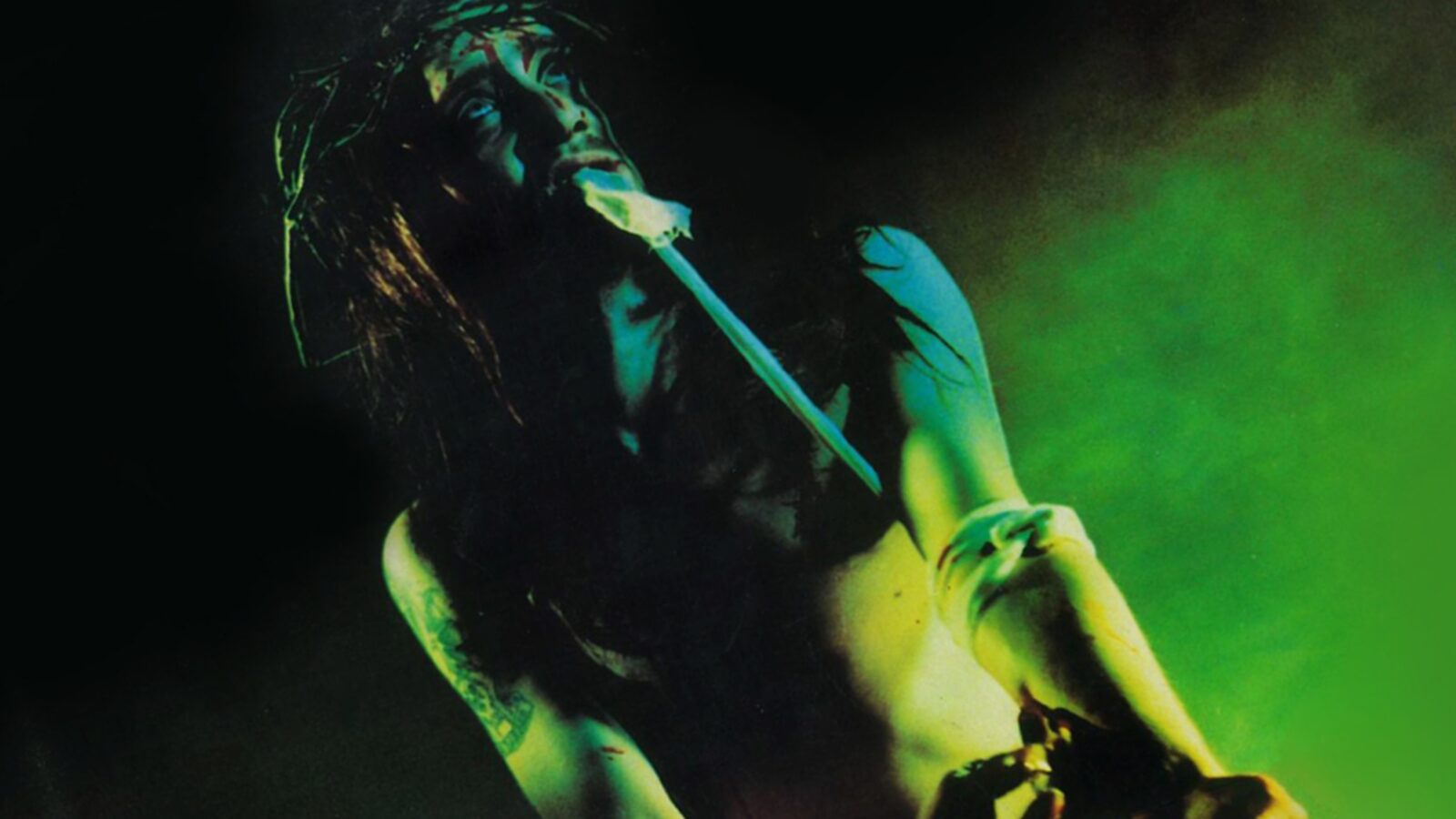When the 80s rolled around and punk was starting to pass its commercial peak, post-punk and goth rock bands in the US were starting to emerge in popularity. Simultaneously, deathrock was also a brooding scene that was known for its depictions of surrealism and theatrical gothic imagery that explored similar doom-and-gloom romanticism. Some well know bands in this genre included 45 Grave, The Super Heroines, and Zombina And The Skeletons. However, one of the most fascinating figures in the development of the 80s and 90s deathrock scene whose work considerably influenced the goth subculture in America was musician, poet, painter, and performance artist Rozz Williams, who is best known as the founder and frontman of seminal punk-goth hybrid band Christian Death.
Williams was born from the disenfranchised side of Roger Alan Painter, who grew up gay in an intensely conservative Southern Baptist household in California. As a kid who came of age in the raging punk explosions of the 70s, Williams started the Christian Death saga at just 16 years old with four other relentlessly creative 16-year-old musicians in his childhood bedroom as a violent desire to reject the traditional modes of thought to strike a balance between art and personal trauma—an act of defiance in itself. While the band clearly drew an influence from punk, is hard to place squarely in a musical genre. Too aggressive to be considered post-punk, yet a few degrees away from heavy metal, but also too heavy on poetry and concept art. But whatever the genre, Christian Death was more than just a band, and they have created a rollercoaster ride of doom and anger on the hardcore scene.
The morbidity and surrealism that Williams imbued in his work was more than part of his appeal. The name Rozz Williams came from a grave he stumbled upon at a cemetery in his hometown Pomona. Musically and performatively, he drew from glam-rock artists like David Bowie and Roxy Music as well as industrial outfits like Throbbing Gristle. His songwriting was ripe yet frequently ventured into an unsavory and grotesque territory with morbid themes of depravity, drug use, and death. His sound was known for its gloomy ambiance, effect-driven guitars, and slow rifts inspired by horror scores and soundtracks. His adversarial appropriation of Christian theology and blatant disdain for religious encroachment led to the nuanced approach in his artistry. Often appearing in full drag when he went on stage, his live shows incorporated a lot of religious iconographies and were presented in an extremely bizarre, theatrical, and confrontational way in order to make his audience question what they were watching and their own morals through the violent spectacles he granted—a style of performance that is now often referred to as shock-rock which can be traced back to acts like Screamin’ Jay Hawkins, Ozzy Osborne, and Alice Cooper. About this defining aspect of his self-expression, Williams said, “It’s almost as though for me to go on stage is really a scary thing. So I’ve like created another person that I can go on stage with, and all of that is a part of that, you know. I’m not the same person right now as I would be if I was going on stage.”
Williams’ work was certainly not for the faint of heart, but he was a very fragile soul calling for help who wasn’t exactly cut out to handle the cruelty of this world and the vultures that lived in it. But when he was allowed to create in his ways, he was the happiest. Williams’ lifelong battle with depression eventually defeated him on April 1, 1998, at the age of 34 in his home in West Hollywood. He left no note behind, just 18 years of music and poetry for family and friends to scavenge for clues, of which many were already in sight. Despite staying an obscure figure outside his own scene at the time, he managed to gain a cult-like following around the world, influencing generations of outsiders and countless boundary-pushing household names such as Marilyn Manson and Trent Reznor. People looked up to his bravery as he fearlessly dressed in women’s clothing on and off stage in a time and place where any visible gender non-conformity could lead to arrest or even death.
True to form, Willams’ life was dedicated more to the sake of art than it was to live—a true romantic who sacrificed normality, health, and even happiness for the sake of vision. He’s gone now, but the recordings and the disciples live on. It’s awe-inspiring and cool to know, especially for queer people who love rock and frequently have to search for their own identity and past.
“I can die a thousand times, but I will always be here / With the powder skull secrets of forgotten years / The hangman’s noose is drenched with bloodstained tears / My hands are the killer that confirms my fear.”
— ”Spiritual Cramp,” Christian Death
Advertisement
Advertisement
